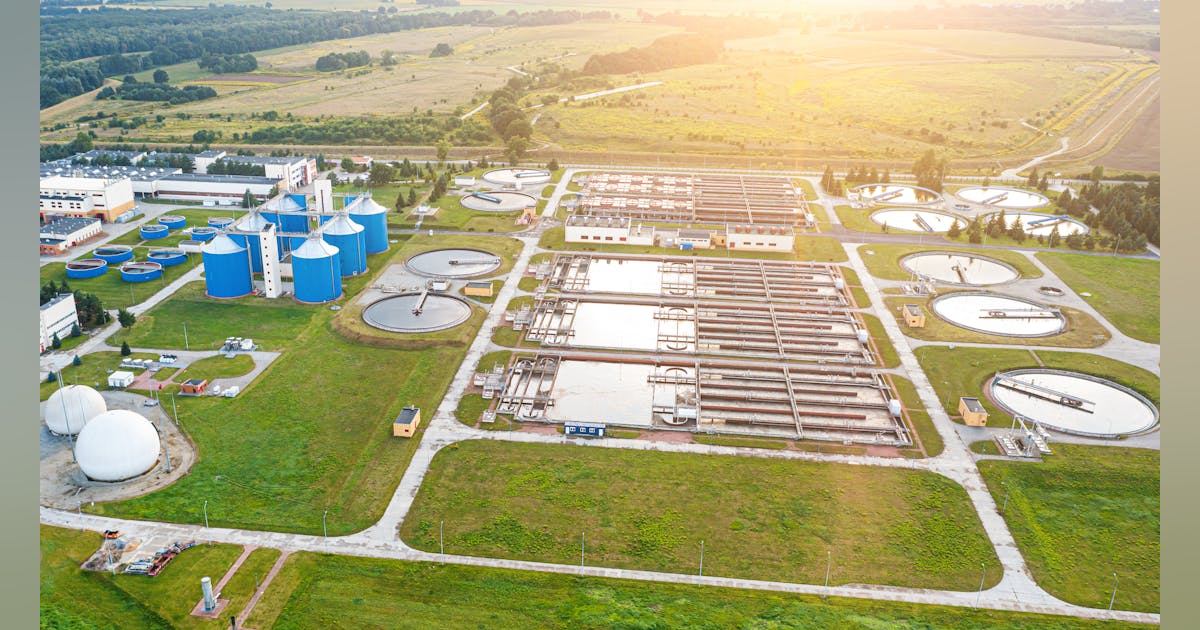

Sustainable Wastewater Treatment with Peracetic Acid
Peracetic acid, also known as peroxyacetic acid or PAA, is a powerful disinfecting and sanitizing agent that is increasingly being used in wastewater treatment. PAA is approved for use in wastewater disinfection by the federal government and is currently permitted in 18 states, with six additional states in the process of gaining approval. This article will explore the benefits of PAA in wastewater treatment and its minimal impact on biological oxygen demand (BOD) levels.
About PAA for Wastewater Treatment
PAA has been used as an alternative to chlorine as a wastewater disinfectant since it received federal approval. It offers several advantages over chlorine chemistries, including lower costs, lower chemical use, fewer process steps, and no regulated disinfection byproducts. PAA effectively neutralizes bacteria, viruses, fungi, and other contaminants that can hinder wastewater treatment facilities from meeting sanitation standards and permit requirements. Its high oxidation potential enables it to provide rapid disinfection rates. Despite its strong oxidative power, PAA breaks down into harmless byproducts within a short period of time.
PAA is available in various concentrations and is used in different industrial applications, including food and beverage, meat and poultry, and oil and gas markets. In wastewater disinfection, 15% PAA solutions are commonly used, although other strengths like 12% and 22% are also available.
PAA offers wastewater treatment operators the following benefits:
- More powerful and higher oxidation potential than chlorine alternatives.
- Does not require a neutralizing agent to make water safe for discharge.
- Breaks down into water, hydrogen peroxide, and acetic acid (vinegar).
- Can be used in conjunction with UV disinfection.
- Requires no risk management plan or operator certification for safe handling and storage.
PAA vs. Chlorine
PAA has emerged as a green “next generation” wastewater treatment option as more systems seek alternatives to chlorine products. Unlike chlorine, PAA decomposes to oxygen and water without the need for a powerful neutralizing agent. This decomposition process eliminates the production of harmful or regulated byproducts. Operators considering a switch from chlorine to PAA are attracted by its lower capital expenditure costs compared to other alternatives like UV or ozone. Additionally, existing infrastructure can often be used with PAA, reducing conversion costs.
According to WaterOperator.org, wastewater systems consider moving to peracetic acid for several reasons:
- PAA decomposes into biodegradable residuals that can pass whole effluent toxicity tests without removal, unlike chlorine alternatives.
- Residuals and subsequent byproducts of PAA are not toxic, mutagenic, or carcinogenic.
- Bioaccumulation in aquatic organisms is highly unlikely with PAA.
- PAA does not produce chlorinated compounds or harmful disinfection byproducts (DBPs).
BOD in Wastewater
Biological oxygen demand (BOD) is a crucial factor in water-quality management and environmental protection. It measures the amount of dissolved oxygen that will be consumed by bacteria in a receiving water stream when they start feeding on the nutrients introduced by wastewater. Higher nutrient levels in wastewater lead to increased bacterial growth, resulting in lower dissolved oxygen levels in the receiving stream. This can have adverse effects on aquatic organisms such as plants and fish. Introducing wastewater with high BOD levels can lead to eutrophication, including algal blooms, which can be detrimental to aquatic ecology.
However, PAA contributes only minimal increases to BOD levels in wastewater effluent and has no significant impact in wastewater systems that already comply with discharge consent limits.
SDGs, Targets, and Indicators
| SDGs | Targets | Indicators |
|---|---|---|
| SDG 6: Clean Water and Sanitation | Target 6.3: Improve water quality by reducing pollution, eliminating dumping, and minimizing release of hazardous chemicals and materials | Indicator 6.3.2: Proportion of bodies of water with good ambient water quality |
| SDG 9: Industry, Innovation, and Infrastructure | Target 9.4: Upgrade infrastructure and retrofit industries to make them sustainable, with increased resource-use efficiency and greater adoption of clean and environmentally sound technologies and industrial processes | Indicator 9.4.1: CO2 emission per unit of value added |
| SDG 12: Responsible Consumption and Production | Target 12.4: By 2020, achieve the environmentally sound management of chemicals and all wastes throughout their life cycle, in accordance with agreed international frameworks, and significantly reduce their release to air, water, and soil to minimize their adverse impacts on human health and the environment | Indicator 12.4.2: Hazardous waste generated per capita and proportion of hazardous waste treated, by type of treatment |
1. Which SDGs are addressed or connected to the issues highlighted in the article?
SDG 6: Clean Water and Sanitation
The article discusses the use of peracetic acid (PAA) as a wastewater treatment chemistry. This is directly connected to SDG 6, which aims to ensure availability and sustainable management of water and sanitation for all.
SDG 9: Industry, Innovation, and Infrastructure
The article highlights the advantages of using PAA over chlorine as a wastewater disinfectant, including lower costs, lower chemical use, and fewer process steps. These advantages align with SDG 9, which focuses on building resilient infrastructure, promoting inclusive and sustainable industrialization, and fostering innovation.
SDG 12: Responsible Consumption and Production
The article mentions that PAA is an environmentally sound alternative to chlorine, as it decomposes into water, hydrogen peroxide, and acetic acid. This aligns with SDG 12, which aims to ensure sustainable consumption and production patterns.
2. What specific targets under those SDGs can be identified based on the article’s content?
Target 6.3: Improve water quality by reducing pollution, eliminating dumping, and minimizing release of hazardous chemicals and materials
The use of PAA as a wastewater disinfectant contributes to improving water quality by reducing pollution and minimizing the release of hazardous chemicals.
Target 9.4: Upgrade infrastructure and retrofit industries to make them sustainable, with increased resource-use efficiency and greater adoption of clean and environmentally sound technologies and industrial processes
The adoption of PAA as a wastewater treatment chemistry represents an upgrade in infrastructure and the use of a clean and environmentally sound technology.
Target 12.4: By 2020, achieve the environmentally sound management of chemicals and all wastes throughout their life cycle, in accordance with agreed international frameworks, and significantly reduce their release to air, water, and soil to minimize their adverse impacts on human health and the environment
The use of PAA as an alternative to chlorine aligns with the target of achieving environmentally sound management of chemicals and reducing their release to water.
3. Are there any indicators mentioned or implied in the article that can be used to measure progress towards the identified targets?
The article does not explicitly mention any indicators. However, the following indicators can be used to measure progress towards the identified targets:
Indicator 6.3.2: Proportion of bodies of water with good ambient water quality
This indicator can be used to measure the improvement in water quality achieved through the use of PAA as a wastewater disinfectant.
Indicator 9.4.1: CO2 emission per unit of value added
Although not directly mentioned in the article, the use of PAA as a more efficient and environmentally friendly wastewater treatment chemistry can contribute to reducing CO2 emissions associated with traditional chlorine-based disinfection methods.
Indicator 12.4.2: Hazardous waste generated per capita and proportion of hazardous waste treated, by type of treatment
This indicator can be used to measure the reduction in hazardous waste generated through the use of PAA as an alternative to chlorine.
4. SDGs, Targets, and Indicators
| SDGs | Targets | Indicators |
|---|---|---|
| SDG 6: Clean Water and Sanitation | Target 6.3: Improve water quality by reducing pollution, eliminating dumping, and minimizing release of hazardous chemicals and materials | Indicator 6.3.2: Proportion of bodies of water with good ambient water quality |
| SDG 9: Industry, Innovation, and Infrastructure | Target 9.4: Upgrade infrastructure and retrofit industries to make them sustainable, with increased resource-use efficiency and greater adoption of clean and environmentally sound technologies and industrial processes | Indicator 9.4.1: CO2 emission per unit of value added |
| SDG 12: Responsible Consumption and Production | Target 12.4: By 2020, achieve the environmentally sound management of chemicals and all wastes throughout their life cycle, in accordance with agreed international frameworks, and significantly reduce their release to air, water, and soil to minimize their adverse impacts on human health and the environment | Indicator 12.4.2: Hazardous waste generated per capita and proportion of hazardous waste treated, by type of treatment |
Behold! This splendid article springs forth from the wellspring of knowledge, shaped by a wondrous proprietary AI technology that delved into a vast ocean of data, illuminating the path towards the Sustainable Development Goals. Remember that all rights are reserved by SDG Investors LLC, empowering us to champion progress together.
Source: watertechonline.com

Join us, as fellow seekers of change, on a transformative journey at https://sdgtalks.ai/welcome, where you can become a member and actively contribute to shaping a brighter future.






